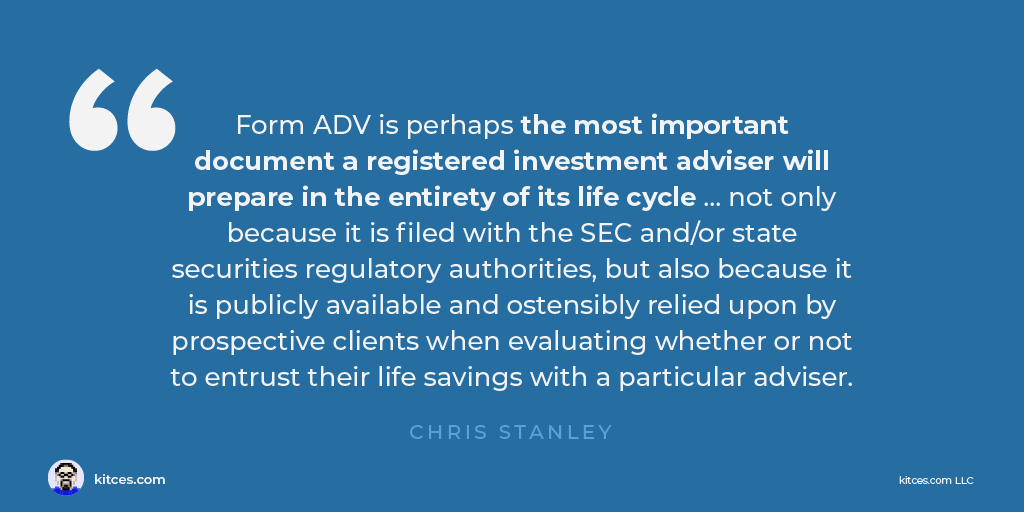As a document required to be filed by all registered investment advisers, Form ADV is (at least in theory) a standardized description of each RIA’s services, fees, and business practices, presented in a series of four forms (Part 1, Part 2A, Part 2B, and Part 3) each comprised of a set of underlying sections. As the thinking goes, requiring each firm to file Form ADV with the SEC and/or state regulators (and making it available to the general public) gives investors a way to compare different RIAs in choosing with whom to entrust their savings.
Yet, there is no particular ‘standard’ way to complete some parts of Form ADV, which on the one hand allows RIAs to customize their Form ADV to their own specific firms’ practices, but on the other creates a significant amount of leeway for advisers to fill out each section, potentially resulting in the form being filled out incorrectly or in omitting important information. And although the SEC provides instructions and some guidance for RIAs in drafting their Form ADVs, the instructions allow for a wide latitude of interpretation that can make it difficult for advisers to know exactly how their firm’s information should be presented.
For advisers drafting their Form ADV, then, it can be valuable to understand where regulators expect specific interpretations of their terminology, and where there is more leeway. For example, in certain contexts, the terms “you” and “your” can refer solely to the advisory firm itself, while in others, the terms can encompass any of the firm’s related persons (e.g., directors and officers, partners, and employees of the firm). The answers to some of the questions on Form ADV can hinge on which interpretation of the terms is used.
Additionally, the ‘correct’ answer for some sections on Form ADV may depend to some degree on personal interpretation of questions that have not changed with evolving business practices. For example, the reduction (and often elimination) of trading commissions over time meant that the ‘soft dollar’ benefits of research, technology, and other products or services historically provided by broker-dealers to RIAs in exchange for directing clients to their platforms have become less of an explicit quid-pro-quo arrangement than they were in the past (since advisers now are more likely to merely recommend a client to use a specific broker-dealer or custodian, rather than selecting it for them). But because many broker-dealers continue to provide technology and other benefits to RIAs that use their custodial platforms, some might argue that this does constitute a form of soft-dollar benefit requiring a disclosure on Form ADV, even though it reflects a practice that is now far removed than the one that the soft-dollar disclosure requirement was created to address.
Ultimately, because of the many ways of interpreting the requirements of the parts and subparts of Form ADV, it can be hard to know where to begin. However, by addressing some of the key areas that commonly trip up advisers, it’s possible to avoid many unintentional misstatements or omissions that could trigger a deficiency from the SEC or state regulators, reducing the likelihood of additional time-consuming tasks that would otherwise divert the adviser from their more valuable (and likely more enjoyable) work of serving clients!


